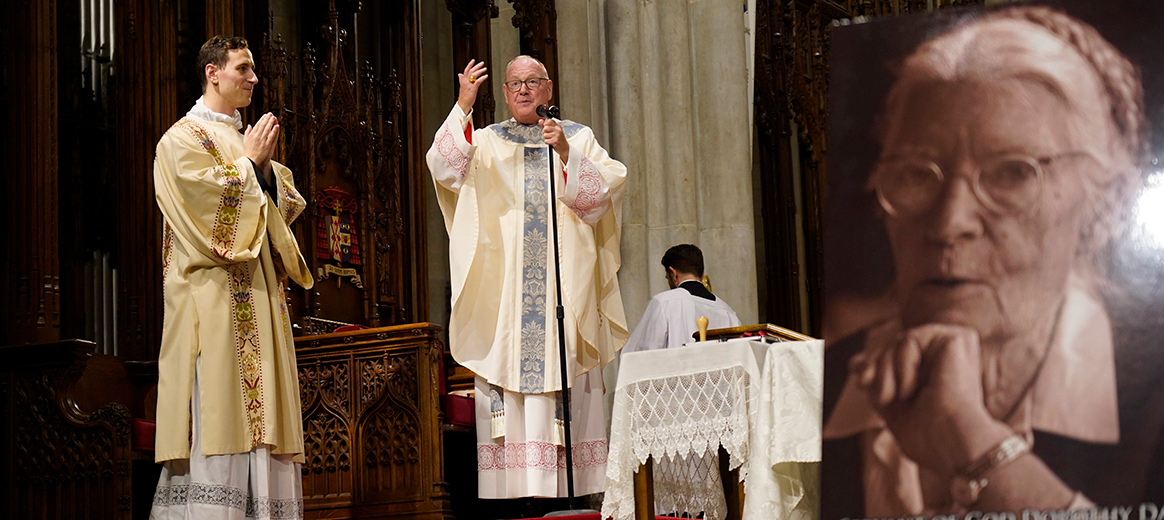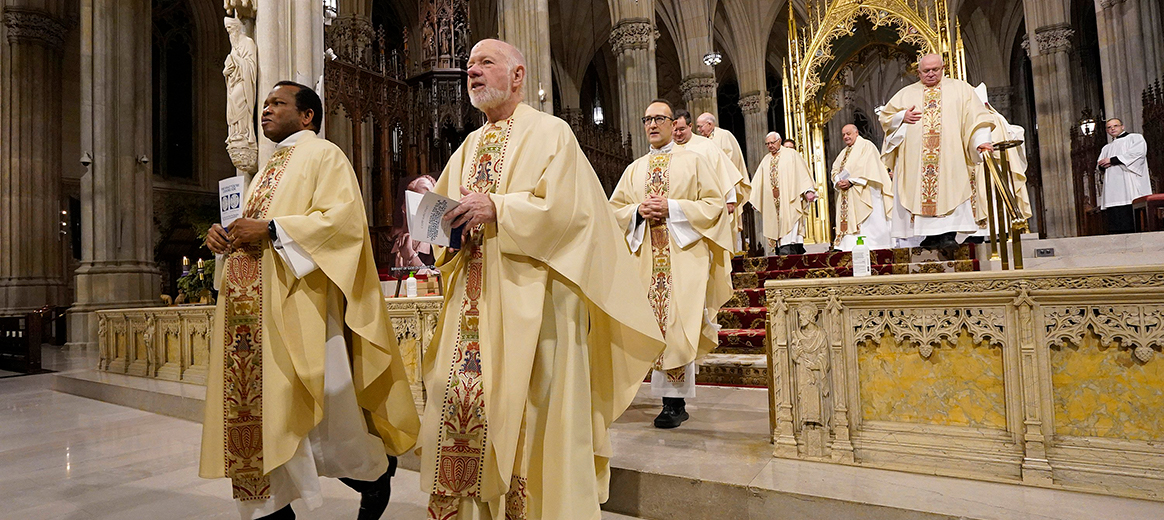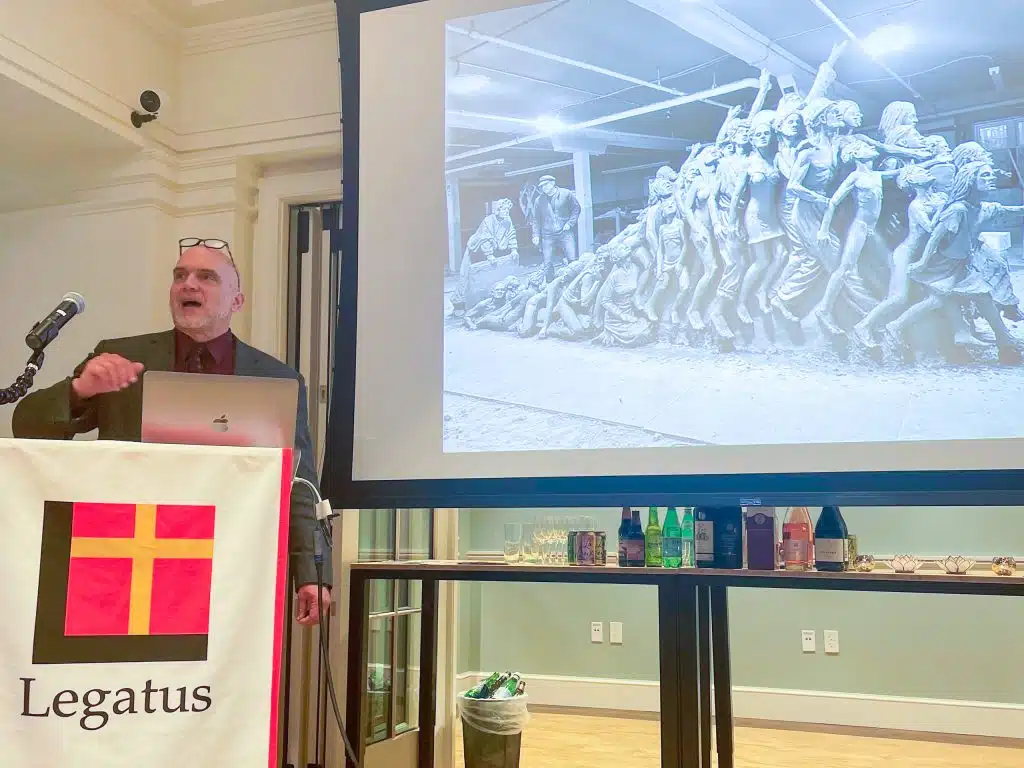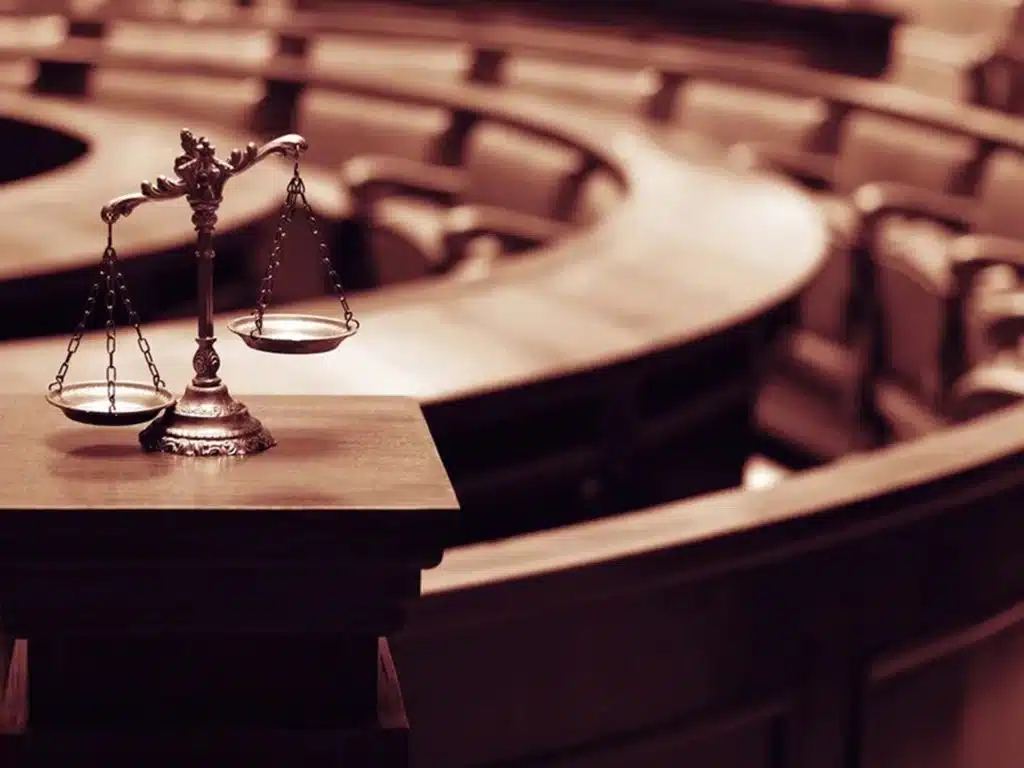NEW YORK — More than 1,500 people filled St. Patrick’s Cathedral Dec. 8 to witness the formal end of the diocesan phase of the sainthood cause for Dorothy Day.
Following official protocol established by the Vatican Congregation for Saints’ Causes, New York Cardinal Timothy M. Dolan stamped a hot wax seal onto red ribbon binding the final box of documents collected during the 23-year process.
Cardinal Dolan closed the diocesan inquiry with a decree. He and other officials of the inquiry took an oath attesting to its integrity and promised to safeguard the confidential testimony of those they interviewed in the process.
In response, the congregation offered cheers and a standing ovation.
Dorothy Day was born in Brooklyn in 1897. She worked as a journalist for several Socialist newspapers and was an activist deeply interested in the plight of farmers and workers. She was received into the Catholic Church in 1927.
In his homily, Cardinal Dolan said Day was dismayed at the lack of visible Catholic advocacy or witness when she covered a hunger march in Washington in 1932.
Dec. 8 that year, the feast of the Immaculate Conception, she prayed at the National Shrine of the Immaculate Conception (now a basilica), for God to reveal a providential plan for her as a Catholic to serve the poor and unemployed.
When she returned to New York, she met Peter Maurin, an itinerant French worker and scholar whom Cardinal Dolan described as “one of the most eccentric people you’d ever want to meet.” Maurin was steeped in Catholic social teaching, and he and Day developed a vision of a society constructed on Gospel values.
Day and Maurin founded The Catholic Worker newspaper, “houses of hospitality” for the indigent and ultimately a lay movement dedicated to the daily practice of the works of mercy, the embrace of nonviolence, prayer and life in community and voluntary poverty.
There are now 240 local active Catholic Worker communities. The Catholic Worker newspaper is published seven times a year and is sold for 1 cent an issue.
Day was a daily communicant who practiced social justice, pacifism and charity. She was arrested multiple times for protesting in support of striking workers and against wars. She died in 1980 at a Catholic Worker house in New York City.
George Horton, one of the vice postulators of Day’s cause for sainthood, said that New York Cardinal John J. O’Connor asked him in the late 1990s to convene a group of people who knew Day to examine if she should be proposed for sainthood.
“There was unanimous support, but also concerns about the cost and how the church would picture her. Dorothy called people to put into action the Sermon on the Mount, to practice charity and justice. She called people to the deepest sense of the Gospel that was not always on the front burner,” he said.
Horton said Day’s pacifism was seen as a threat by some people and there was concern that an abortion she obtained in the 1920s would be singled out as a defining issue.
“Dorothy was loved by the people who knew her and they did not want her legacy to be diluted,” Horton said.
Cardinal O’Connor initiated the canonization process in 2002 and Day was given the title “Servant of God.” The Dorothy Day Guild was established in 2005 to support the cause and receive information about “graces and favors” received through her intercession. The sainthood process was reinvigorated in 2014.
Cardinal Dolan said Day’s cause got a huge boost when Pope Francis visited the U.S. in 2015 and identified her as an important representative of the American people.
Once the documents are received in Rome, they will be studied. Then would come the next step in the canonization process — a declaration of Day’s heroic virtues, after which the church would give her the title “Venerable.” Next would come beatification, after which she would be called “Blessed.” The third step is canonization.
In general, a miracle verified to have occurred through the intercession of the sainthood candidate is needed for beatification and another such miracle is needed for canonization.
Korgen said the record includes Day’s entire FBI file detailing multiple investigations into accusations she was a Communist. She was cleared each time, he said, and the reports generally concluded, “some might consider her a pain, but they still vouched for her and that she was well-intentioned.”
Horton said, “Dorothy Day is a saint for our time. She gives us a center when there is so much division in our country. She was an orthodox Catholic who fed the poor and worked for social justice. She gives us a vision of finding common ground and building community.”
He said it was a special gift for him to work with people who knew Day and were “real sources” for demonstrating her belief that Christ can be found in every person.
Cardinal Dolan concelebrated the Mass with Auxiliary Bishop Edmund J. Whalen of New York and 12 priests..




